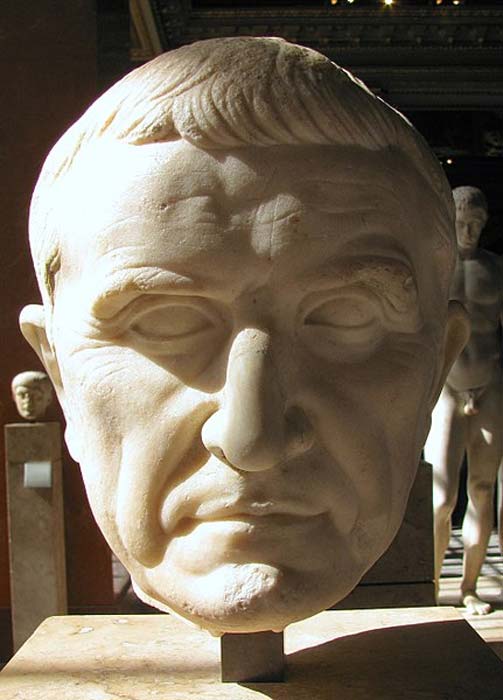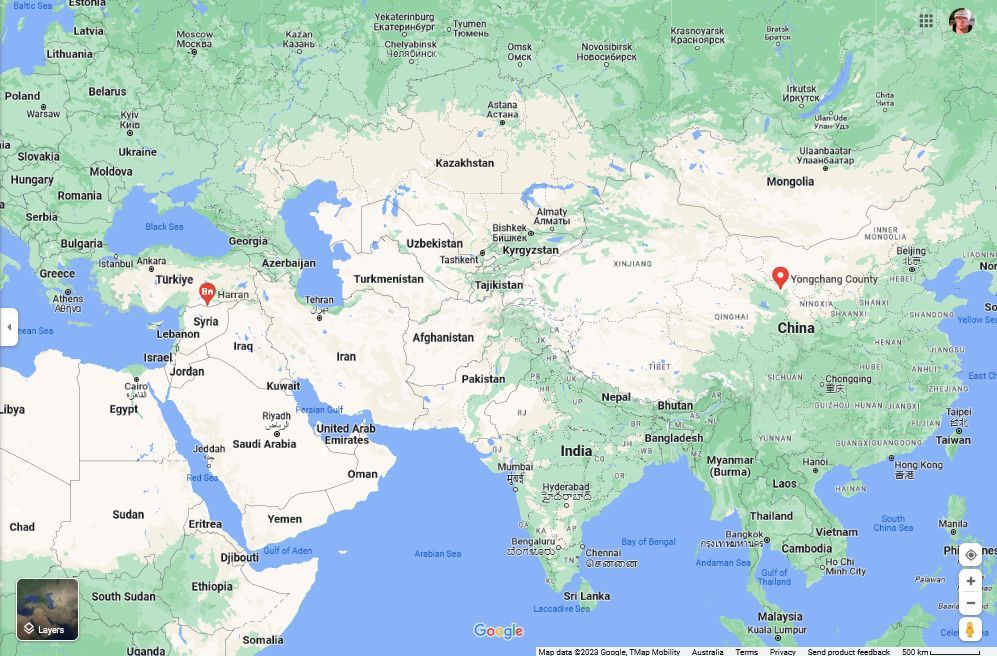
Rome's First Triumvirate.
Crassus was the architect of his own downfall .. he had crushed the slave uprising led by Spartacus in 71 BC, where after convinced of his own military prowess he recruited an army and Marched on Parthia modern Turkey, no member of his legions ever returned to Italy while after his surrender the Parthians poured molten lead down his throat.

The Battle of Carrhae, 53 BC.
A Roman Diplomatic Mission that journeyed to that country some thirty five years on located a single survivor, who recounted the Syrian towns and villages on the invasion route were filled with all manner of statuary which the Romans looted. The extra weight slowed their column which became strung out while those at the rear parties were under constant harassment by the Syrian cavalry .. experienced Roman Officers on Crassus' staff advised him to halt the column at a certain river, build a repository for the loot and allow the stragglers to catch up.
Crassus spurned their advice and insisted the column should march on which it did to extinction .. the survivor was from an engineering detachment whose leaders realized what was taking place and knew the danger they were in, he said they built a stockade from where they defended themselves. Which is how they escaped the fate the rest of the army suffered .. he knew of only seven other living survivors who were in outlying parts of the country, he had taken up with a Syrian woman and with his engineering skills he became one of the leading citizens and builders in that country.
Crassus spurned their advice and insisted the column should march on which it did to extinction .. the survivor was from an engineering detachment whose leaders realized what was taking place and knew the danger they were in, he said they built a stockade from where they defended themselves. Which is how they escaped the fate the rest of the army suffered .. he knew of only seven other living survivors who were in outlying parts of the country, he had taken up with a Syrian woman and with his engineering skills he became one of the leading citizens and builders in that country.

The Deaths of the First Triumvirate.
Crassus had determined to make a name for himself after Pompey had upstaged him in the handling of the slave rebellion of Spartacus, as the Roman governor of Syria Crassus set out to extend Rome's lands eastward into Parthia .. he was not prepared for the Persian Cataphracts or heavily armored cavalry and their military style.

Atlantic Mirror.
Crassus had in happier times established what is thought to have been the world's first Fire Department in Rome.



Comment